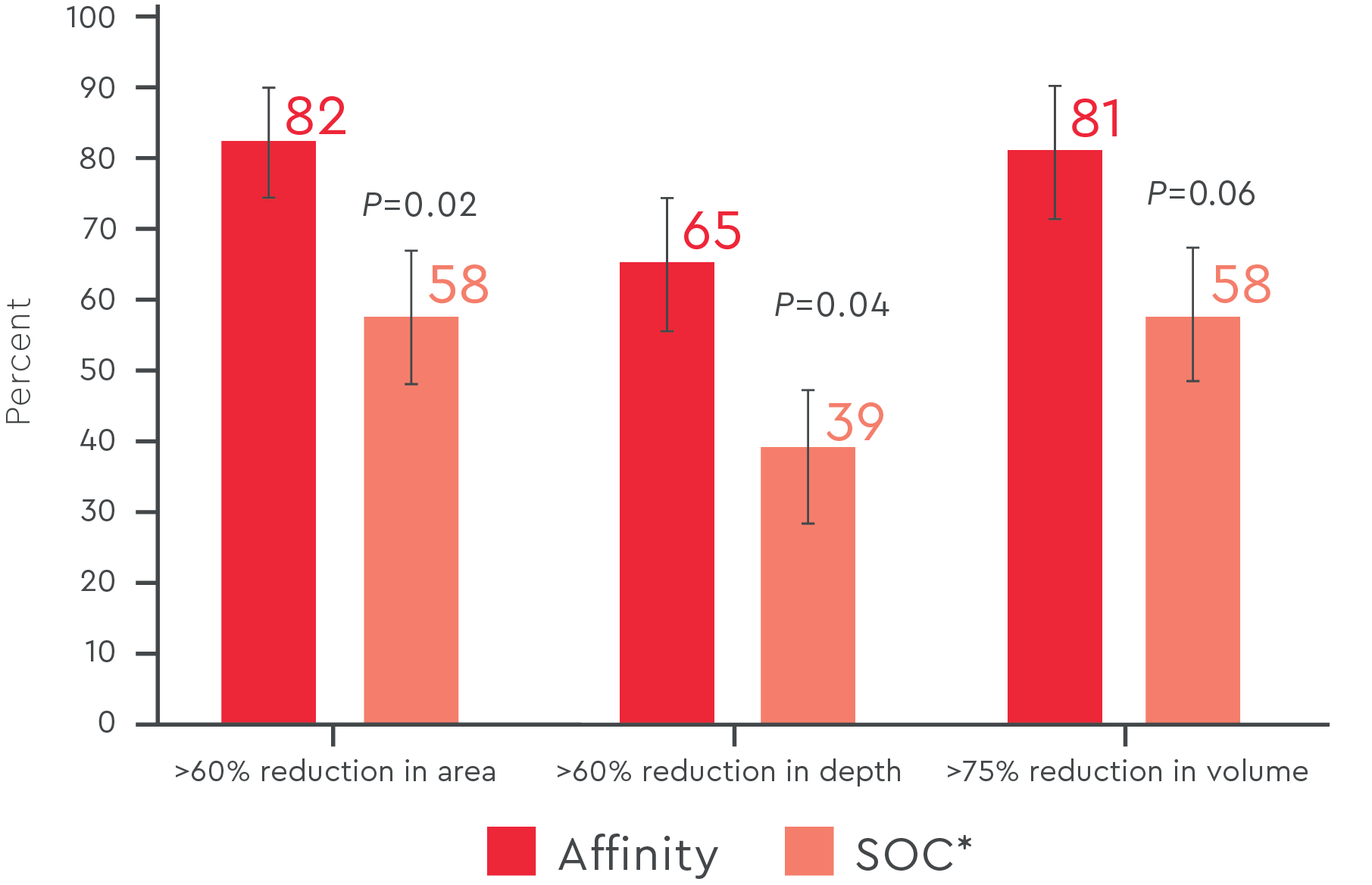RCT and real-
world evidence
As a protective barrier and ECM scaffold, Affinity® was proven to support healing in a prospective, multicenter, randomized controlled trial (RCT)1
- Assessed efficacy of Affinity vs standard of care (SOC)* in 76 patients with refractory diabetic foot ulcers (DFUs) (>4 weeks' duration)
- Digital planimetry† accurately captured DFU area, depth, and volume
- Affinity significantly improved the incidence and time to wound closure (both P<0.05)
Significantly more DFUs were closed with Affinity than SOC at 8, 12 and 16 weeks (P=0.04)1
Frequency of wound closure‡

Median time to DFU closure with Affinity was 11 weeks. SOC failed to attain this endpoint at 16 weeks.1
Significantly more DFUs achieved >60% reduction in wound area (P=0.02) and depth (P=0.04) and >75% reduction in volume (P=0.06) with Affinity than SOC1

Real-world evidence
Affinity has been shown to reduce wound area and support closure in a wide variety of wounds from head to toe.2-4
≥65%
Wound size reduction
at 3 weeks
at 3 weeks
Study author: Lambert • Study type: retrospective case series • Wound types: mixed (N=6 wounds)
93.9%
Wound size reduction
at 6 weeks
at 6 weeks
Study author: Sabo • Study type: prospective case series • Wound types: mixed (N=3 wounds)
100%
Of wounds closed
at 9 weeks
at 9 weeks
Study author: Carpenter • Study type: retrospective case series • Wound types: mixed (N=5 wounds)
Find comprehensive support with Affinity
View our provider support or talk to an Organogenesis Tissue Regeneration Specialist about supporting your practice with the only fresh, amniotic membrane tissue product on the market.
Contact usPlease refer to the Affinity instructions for use for usage and safety information.
REFERENCES:
- Serena TE, et al. J Comp Eff Res. 2019. doi:10.2217/cer-2019-0142
- Lambert et al. Presented at: Symposium on Advanced Wound Care Fall 2015; September 26-28, 2015; Las Vegas, NV.
- Sabo M, et al. Chronic Wound Care Manage Res. 2018;5:1-4.
- Carpenter et al. Presented at: 4th Annual Innovations in Wound Healing Conference; December 7-10, 2017; Bimini, Bahamas.